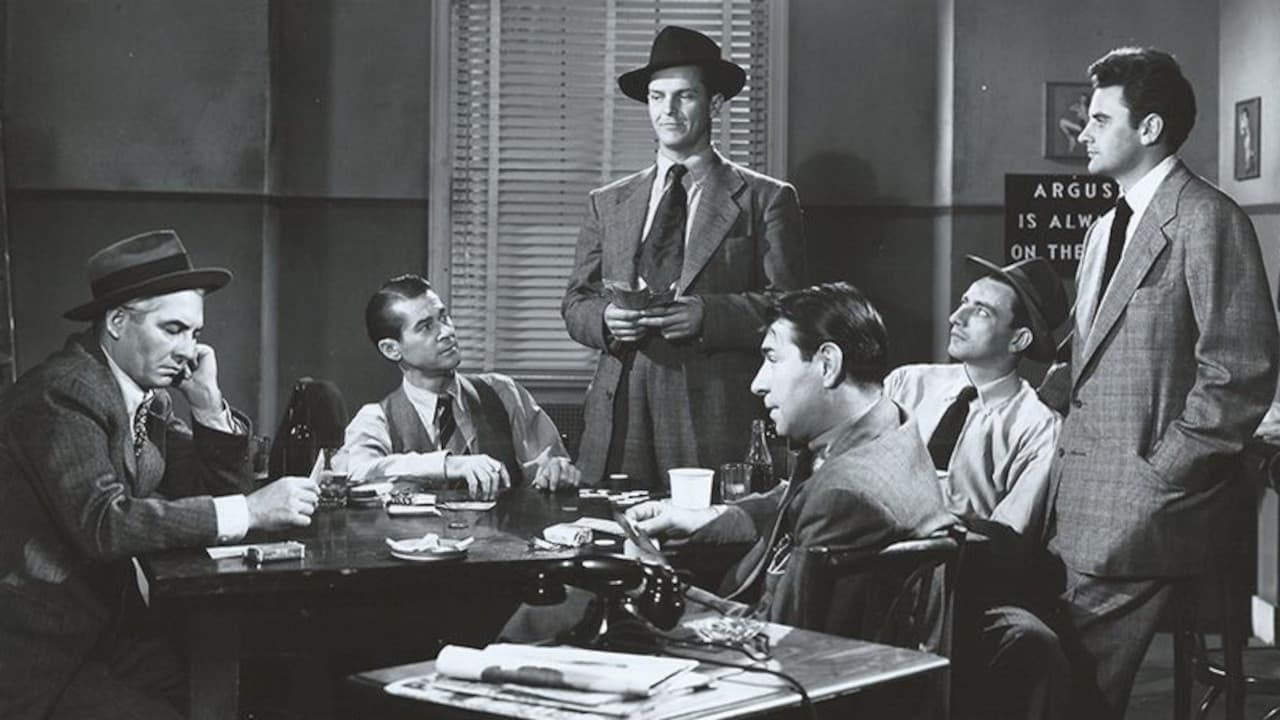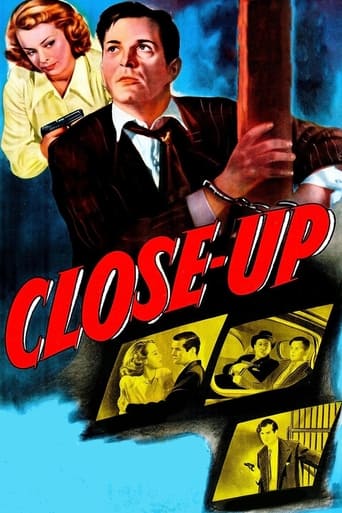

just watch it!
... View MoreAll that we are seeing on the screen is happening with real people, real action sequences in the background, forcing the eye to watch as if we were there.
... View MoreIt's easily one of the freshest, sharpest and most enjoyable films of this year.
... View MoreClose shines in drama with strong language, adult themes.
... View MoreI love this film. It's so full of surprising turnings and brilliant innovations that you actually must enjoy being taken for a ride. The story in itself is ingenious, by accident an ordinary news reel camera man gets someone like Martin Bormann into the picture, and naturally those Nazis having just come out of the bank after some major transactions want to get hold of that film as a matter of life and death.. What follows is a tumultuous roller-coaster of a hunt for the negative, which involves no end to confuisons, and naturally there is a double-crossing dame involved also, and the poor journalist in all his innocence has every reason to get mad. Fortunately he has a cheerful assistant who always manages to keep him happy after all.There are some striking shots on the way that Hitchcock would have enjoyed, and of course some major close-ups. This is one of those films that in all their confusing up and down turnings leaving you more bewildered than the hero. you must look forward to seeing it some time again.
... View More***SPOILERS***Released the same year that the movie "The Naked City" was released in it being advertised as the first film shot exclusivity on location in the "Big Apple" the movie "Close-Up" is about a newsreel editor Phil Sparr, Alan Baxter, who accidentally gets involved with a fugitive Nazi war criminal Harr Martin Beaumont-Not Bormann- played by Dorothy Kilgallen's husband Richard Kollmar whom he had filmed leaving the 5th Ave bank who almost knocked over the woman model in a fashion shoot that he was filming.It's when the film was developed Beaumont-not his real name- was discovered to be present at Adolf Hitler's famous rip roaring speech in Berlin given on April 28, 1939 to the Reichstag just 4 months before the start of WWII. Thought to have been killed in the battle of Berlin three years ago-1945-Beaumont has resurfaced in NYC planning to start up the destroyed Nazi movement with the help of small time mobster Joseph Gibbons, Phillip Huston, who wants to make the big time as the #1 hood in the city. Sparr is later kidnapped by Gibbons impersonating a New York police detective who tries to retrieve the film of Beaumont that he took who offered him $20,000.00 for it.***SPOILERS***It's later after Sparr escaped with the help of Gibbon's gun-moll, who felt that he was two timing her, Peggy Lake played by Virginia Gilmore he found out that there was a falling out between the two-Gibbons & Beaumont-with Beaumont planning to escape by sea plane on the Hudson River docks to South America. this lead to a major shoot-out between Sparr and Beaumont as well as the NYPD with Beaumont ending up getting the worst of it. In the end Peggy got a light sentence by cooperating with the police and Sparr gets a raise in pay for helping catch, as well as gun down,Nazi fugitive Martin Beaumont. As for Gibbon his plans as being the #1 hood in town ended when he was himself gunned down by Beaumont as he tried, by him all of a sudden becoming patriotic, to prevent him from escaping the long arm of the law.P.S Check out Sid Melton as cab driver Stanislaus Kranobowsky who ended up getting bopped in the head waiting for Sparr who took time off or left his cab to get a cup of coffee. Melton was involved three years later in 1951 in two of the most touching and heart wrenching death scenes in movie history: In the movie "The Steel Helmet" where was stabbed in the back by a sneaky North Korean communist whom he foolishly turned his back on and in the movie "The Lost Continent" where he was brutally gored to death by a 10 ton charging triceratops.
... View MoreAmerican film makers always believe that the bad guys are always caught at some point, even if it is years after they commit their crimes. Here, the criminals are of two different backgrounds: an important Nazi officer known as "the butcher" and an American gangster who is in cahoots with the nasty Nazi and his brood of German thugs. It all comes out in the open when a married man contacts movie photographer Alan Baxter on the pretext of getting the movie footage and negative of him and a woman he wasn't married to and the intrigue that comes out of that when his boss recognizes one of the men walking out of the bank they were shooting in. This leads to a chase throughout New York City between Baxter, boss Loring Smith and the beautiful Virginia Gilmore who isn't quite the innocent young reporter she seems to be. Lots of great location footage, including a chase on a ferry, fill this engaging film noir with lots of intrigue and plenty of nefarious characters popping in and out of the action.
... View MoreShot entirely in Manhattan, using local talent (I love the scenes on board the Hudson River Ferry and at the Ninety-first Street seaplane landing), "Close-Up" is a film noir with a difference. I'll admit that the script tends to be somewhat juvenile. I wondered what a classy producer like Richard Kollmar was doing in it until I remembered that he had a weekly side job as radio's Boston Blackie, having taken over from Chester Morris. Who could ever forget each week's sonorous introduction: "Friend to those who have no friends! Enemy to those who make him an enemy!" And of course Kollmar was later the other half of radio's "Breakfast with Dorothy and Dick". As it happened, "Close-Up" was his only movie, though he did make a couple of TV appearances and was the host of "Guess What!:But I digress! The point I'm making is that while "Close-Up" is occasionally somewhat amateurish in script and flat-footed in direction, it's never boring or dull. What's more, an appropriately noirish pictorial tone in lighting and atmosphere is masterfully created by New York's resident cinematographer, Bill Miller. And of equal importance, this movie marks the film debut of an original score by the famed orchestrator, Jerome Moross, who later composed for "The Big Country" (1958) which I consider to be the best music score ever written for a movie.
... View More